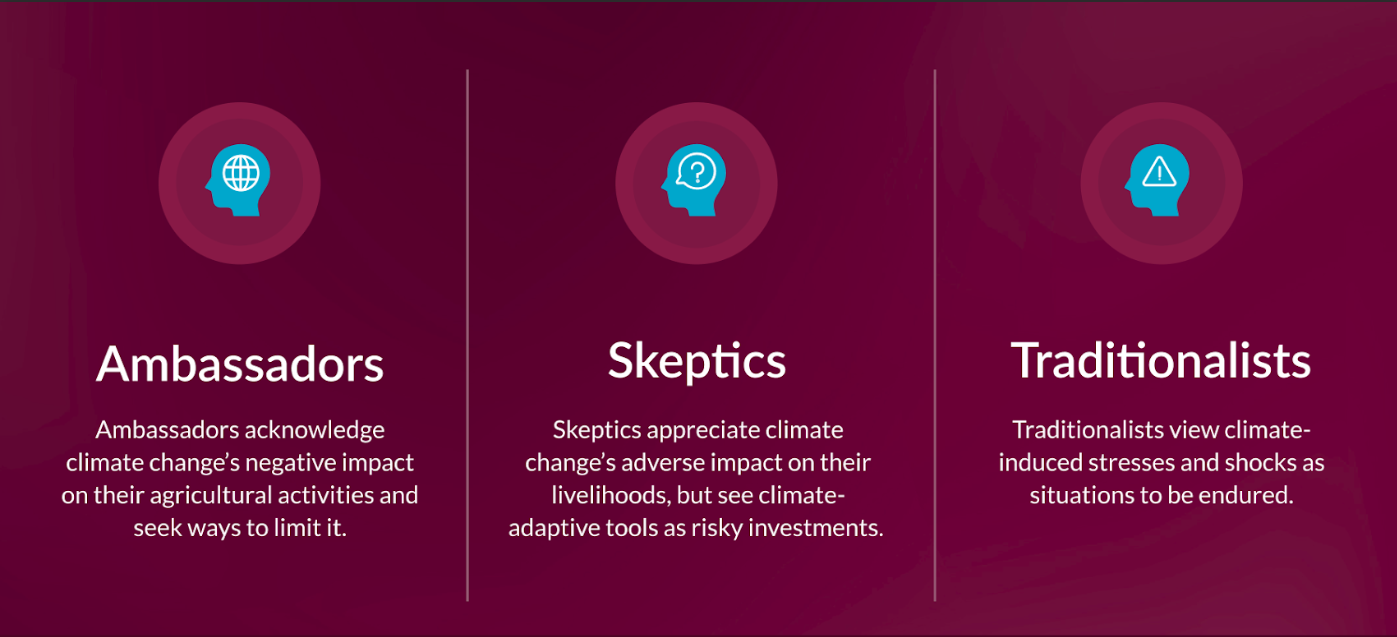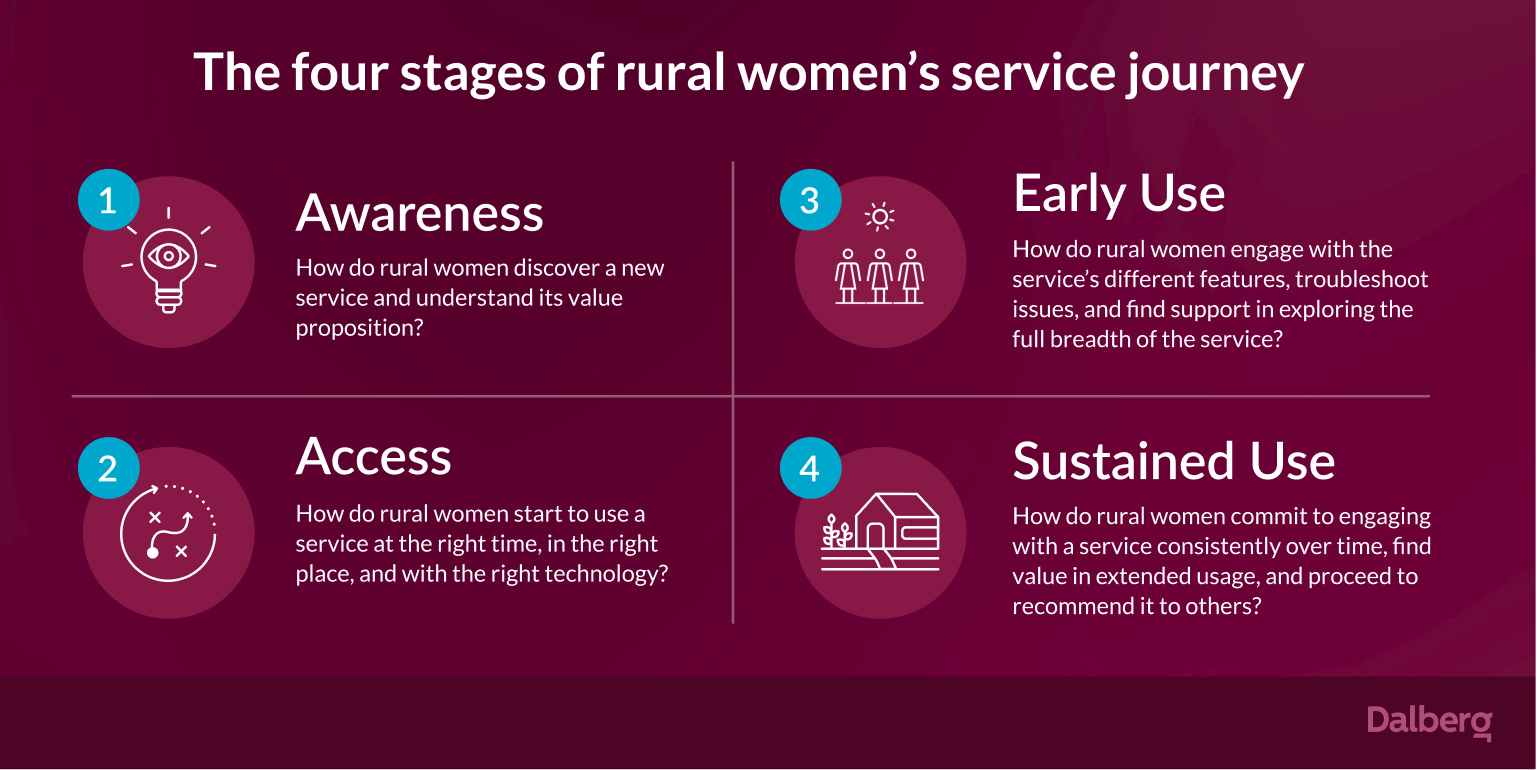Dalberg uses cookies and related technologies to improve the way the site functions. A cookie is a text file that is stored on your device. We use these text files for functionality such as to analyze our traffic or to personalize content. You can easily control how we use cookies on your device by adjusting the settings below, and you may also change those settings at any time by visiting our privacy policy page.
Rural women in low-income countries have different motivations and behaviors, even when they share a common livelihood like agriculture. Understanding their uniqueness enables service providers to tailor offerings that better help rural women boost climate-smart practices.
Around the world, rural women sustain food systems through paid and unpaid work — as farmers, traders, processors, and laborers. However, their contributions face environmental threats from climate change. A range of climate-smart services can boost resilience, but how they are presented will shape outcomes. Mass-market climate solutions, for instance, do not work effectively because rural women are varied, not just vast.
In low-income countries, rural women differ according to lifecycle stages, livelihoods, and cultural contexts. They also perceive and react to climate change shocks differently. As a result, the most successful service providers will be those who can translate this diversity into responsive solutions. Donors and investors within the ecosystem equally stand to unlock opportunities by recognizing the various needs and ambitions.
CGAP’s Women in Rural and Agricultural Livelihoods (WIRAL) team, in partnership with both Dalberg Design and Dalberg Advisors, developed a new report that explores the attributes of rural women dealing with the impact of climate change. The deck profiles three personas, along with their distinct customer journeys through product and service engagement. It also highlights examples of providers offering customized services that can advance climate resilience.
I heard about (the service) from my neighbors. So I decided to join it because I heard that they give inputs and that there will be someone who will help us with our farming.
– Woman smallholder farmer, Kenya
Three personas of rural women
The study combined traits from CGAP’s multiregional body of work with behavioral insights, provider collaborations, and literature reviews to distinguish between the attributes of rural women. Three clear-cut personas emerged — Ambassadors, Skeptics, and Traditionalists, with each emphasizing differences relevant to service delivery.

Ambassadors enjoy diversified sources of income, including agriculture. They control their finances and can make decisions in their homes, which affords them services that will improve their lives and livelihoods. Ambassadors feel empowered to react to the world around them. They acknowledge climate change’s negative impact on their agricultural activities and seek ways to limit it. This pushes them towards climate-adaptive tools, technologies, and services.
Skeptics rely on agriculture for their income, with few alternatives. When offered services that interest them, skeptics choose based on careful observation and research — they consult trusted community members about the pros and cons. Like ambassadors, skeptics appreciate climate change’s adverse impact on their livelihoods and want to curb it. Nonetheless, they see climate-adaptive tools as risky investments, fearing that a failed attempt to test such tools may leave them and their family worse off.
Due to an unsteady income, traditionalists lean on their families for financial support. They are comfortable with the services they already use and are less likely to change them on their own. However, they will follow advice on ways to improve their productivity and income from the head of their household. Traditionalists’ fragile financial state prompts them to exhibit a reduced sense of agency over the environment. They view climate-induced stresses and shocks as situations to be endured.
With additional research, personas can support the development of business cases, business plans, and go-to-market strategies. They should be mapped to unique and specific variables associated with their defining characteristics. Quantitative data can then be collected (through larger-scale surveys and/or existing customer data) and analyzed against these variables to size each persona.
Serving rural women: how the study can help
The report identifies four stages of rural women’s service journey: awareness, access, early use, and sustained use. Each stage starts by guiding service providers on how they can improve that part of their service journey, backed up by research insights. The opportunities for service providers are then explained in more detail, taking into account the needs of different personas among rural women. Here as well, recommendations are based on the women’s lived realities gleaned from research by CGAP and its partner collaborations. To end every stage, the deck highlights service providers who have exemplified the potential described in the stage.

Deeper insights about the personas and their application across the four stages are available in the report. Overall, these learnings can support a broad ecosystem of service providers as they seek to better serve rural women. Dalberg and CGAP teams collaboratively reviewed lessons from the CGAP portfolio to create a unifying narrative of rural women, centered around opportunities for providers to amplify their impact.

